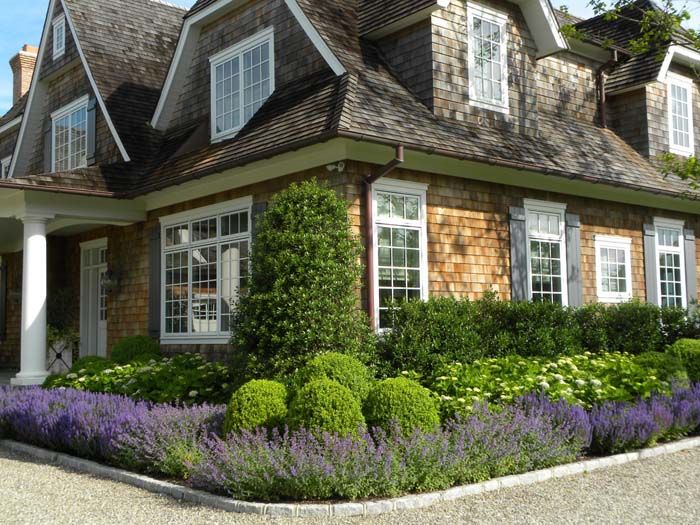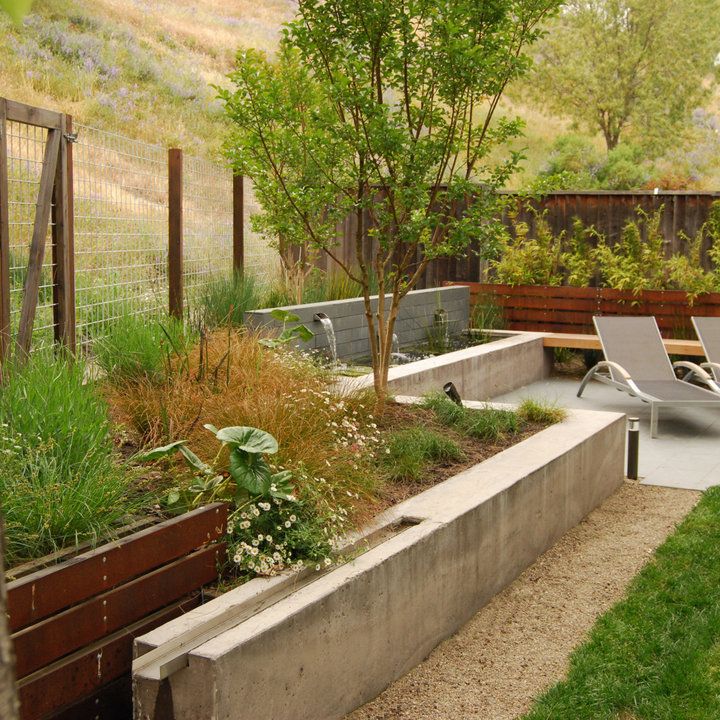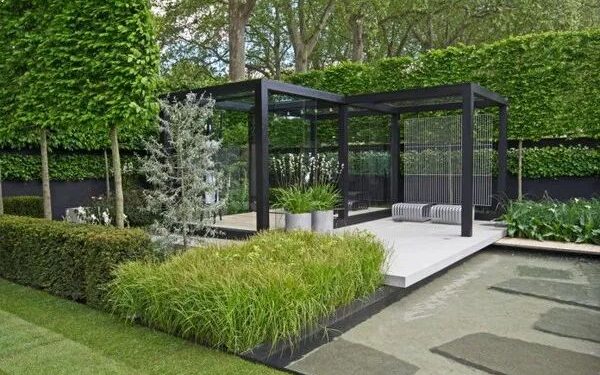Layered landscaping has become one of the most prominent garden design movements heading into 2025. Homeowners, designers, and landscapers alike are embracing this dynamic style, blending aesthetic appeal with sustainability, functionality, and biodiversity. As outdoor spaces increasingly become extensions of indoor living, layered landscaping transforms yards, gardens, and patios into immersive, multi-dimensional environments.
In this article, we will explore the key trends shaping layered landscaping in 2025. We will dive deep into design principles, popular plant selections, innovative materials, and practical applications. Whether you have a sprawling backyard or a modest urban balcony, understanding these trends can help you create a captivating outdoor oasis that aligns with modern sensibilities.
Layered Landscaping
Layered landscaping refers to the intentional arrangement of plants and features at varying heights, textures, and depths to create a sense of depth, movement, and visual interest. Rather than relying on flat, single-level plantings, this approach stacks vegetation in a natural progression from low ground covers to towering trees.
The benefits of layered landscaping go beyond aesthetics:
A. Enhanced Biodiversity: By incorporating multiple plant layers, you attract a broader range of pollinators, birds, and beneficial insects.
B. Improved Soil Health: Diverse plant roots contribute to healthier, more resilient soil structures.
C. Natural Cooling: Strategic layering provides shade and insulation, reducing the heat island effect around homes.
D. Reduced Maintenance: Thoughtful layering minimizes weed growth and stabilizes soil erosion.
Key Layered Landscaping Trends in 2025
Let’s explore the major trends that define layered landscaping in 2025 and how you can implement them in your own garden.
1. Sustainable and Native Plant Focus
Sustainability continues to guide landscaping decisions, with an increasing preference for native plant species that thrive without excessive watering or chemical intervention.
A. Drought-Tolerant Layers: Gardeners are prioritizing plants like lavender, salvia, and ornamental grasses in the mid-layer for their resilience and low water needs.
B. Pollinator Gardens: Integrating milkweed, coneflowers, and bee balm at varying heights supports bees, butterflies, and hummingbirds.
C. Edible Landscapes: Layered gardens are blending beauty with utility by incorporating fruiting shrubs, herbs, and dwarf fruit trees.
By focusing on native and edible species, homeowners create landscapes that are not only stunning but also ecologically responsible.
2. Vertical Gardens and Living Walls
With urban living spaces shrinking, vertical gardening has gained momentum as a practical solution for layering in tight areas.
A. Living Wall Systems: Prefabricated panels allow gardeners to install herb gardens, ferns, and succulents on walls and fences.
B. Climbing Vines: Plants like clematis and jasmine add vertical softness while providing privacy and shade.
C. Tiered Planters: Balcony gardeners are stacking planters vertically to achieve a layered effect without sacrificing floor space.
Vertical elements introduce layers upward, transforming blank walls into lush, green canvases.
3. Multi-Functional Outdoor Spaces
Today’s homeowners want their outdoor areas to serve multiple purposes. Layered landscaping supports this by creating zones that seamlessly transition between activities.
A. Dining and Entertainment: Pergolas adorned with climbing plants define outdoor dining spaces beneath a canopy of greenery.
B. Wellness Gardens: Meditation nooks surrounded by fragrant shrubs and soft groundcovers foster tranquility.
C. Children’s Play Areas: Layered plantings buffer play spaces from the rest of the yard, offering both safety and sensory exploration.
Through thoughtful layering, each zone becomes a distinct yet cohesive part of the landscape.
4. Naturalistic and Wild Garden Aesthetics
Another major trend is the shift toward wild, untamed garden styles that mimic natural ecosystems.
A. Meadow-Style Plantings: Swaths of native grasses and wildflowers in overlapping heights evoke prairie landscapes.
B. Layered Shrub Borders: Dense, multi-species shrub plantings create habitat-rich borders around yards.
C. Woodland Gardens: Understory plantings beneath tall trees use ferns, hostas, and shade-loving perennials for lush, layered ground cover.
These naturalistic approaches encourage biodiversity while reducing the need for intensive maintenance.
5. Integration of Hardscape Layers
Layering isn’t limited to plants alone. Hardscape features play an essential role in creating depth and dimension.
A. Stepped Terraces: Multi-level patios and garden beds follow the landscape’s contours.
B. Retaining Walls with Plant Pockets: Walls double as planters, adding vertical greenery to structural elements.
C. Layered Water Features: Cascading fountains or tiered waterfalls enhance sensory appeal and attract wildlife.
Hardscape layers help organize the space while offering architectural interest.
Designing Your Own Layered Landscape

If you’re inspired to embrace layered landscaping in 2025, here’s a step-by-step approach:
A. Assess Your Site: Observe sun patterns, soil type, drainage, and existing vegetation to determine what layers are feasible.
B. Establish a Focal Point: A tree, sculpture, or water feature can serve as an anchor around which layers radiate.
C. Select Complementary Plants: Choose species with varying heights, textures, bloom times, and seasonal interest.
D. Plan for Maintenance Access: Ensure pathways or stepping stones allow you to tend all areas without compacting soil.
E. Incorporate Vertical Elements: Trellises, obelisks, and arbors can provide instant vertical layers.
F. Blend Hardscape and Softscape: Balance stone, wood, and metal features with lush plantings for a harmonious result.
G. Consider Wildlife: Add birdbaths, insect hotels, and berry-producing plants to attract beneficial fauna.
H. Prioritize Sustainability: Use organic mulch, rainwater harvesting, and compost to nourish your layered garden.
Challenges and Solutions
While layered landscaping offers numerous benefits, it also poses challenges. Here are common obstacles and ways to overcome them:
A. Overcrowding: Avoid planting too densely by researching mature plant sizes and spacing accordingly.
B. Shade Management: Monitor how taller plants cast shadows and adjust placements to prevent sun-loving plants from suffering.
C. Watering Complexity: Install drip irrigation or soaker hoses to deliver water efficiently to different layers.
D. Structural Stability: Ensure retaining walls and terraces are professionally constructed to handle soil weight and water runoff.
E. Pest Balance: Encourage natural predators like ladybugs and birds to keep pest populations in check.
Future Directions in Layered Landscaping

As we look beyond 2025, expect even more innovation in layered landscaping:
A. Smart Irrigation Systems: Technology will automate moisture sensing and watering schedules tailored to each layer.
B. Augmented Reality Design Tools: Gardeners will preview layered designs digitally before installation.
C. Biophilic Design Integration: Outdoor and indoor spaces will blur, with layered gardens extending into green roofs and atriums.
D. Regenerative Landscaping: Emphasis will grow on restoring native habitats and improving soil carbon through layered plantings.
Conclusion
Layered landscaping in 2025 represents a harmonious fusion of art, ecology, and functionality. By embracing multi-dimensional design, homeowners can create gardens that delight the senses, support local ecosystems, and reflect contemporary aesthetics.
Whether you aim for a lush backyard retreat, a productive edible garden, or a chic urban balcony, layering holds the key to unlocking your outdoor space’s full potential. By staying attuned to these trends, you can craft a landscape that not only thrives today but continues to evolve beautifully in the years ahead.










